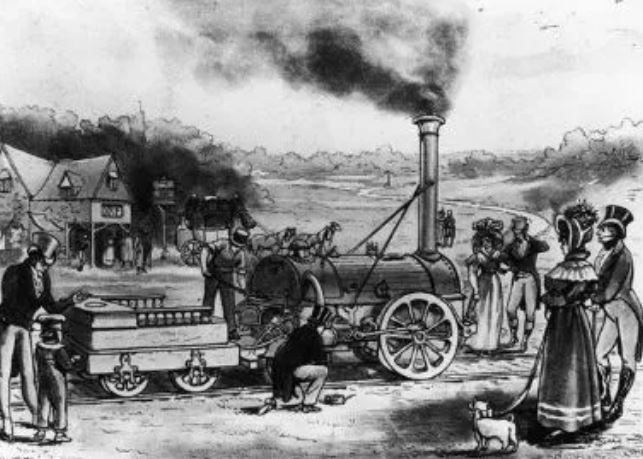Today in this article we are going to give you all the information about who invented the train and when. It is the world’s largest mode of transport that helps any object to move here and there or any person to go here and there and helps millions of passengers to travel from one place to another every day, out of which 92% of the world’s population travels by train!Trains have brought revolutionary changes in people’s lives. Trains are used not only for passengers but also for many other essential items to reach from one place to another. It is a cheap means of transport and secondly, it is a means of comfort. In today’s time, many facilities are being provided in trains and that too at cheap prices. Therefore, the attraction of trains is increasing among people. People who like to travel by train and you too must have traveled by train at some time or the other. So you must know who invented the train and when. If you do not know, then we are going to give you complete information in this article.
The train was invented by Richard Trevithick, an engineer from the United Kingdom. The first train was first seen in 1604 in England. At that time, carriages made of wooden compartments ran on tracks and were pulled by horses and later, a steam engine was used by engineer Richard Trevithick .
Some European engineers had imagined creating a vehicle that could be driven by a machine instead of a horse.
A chimney was fitted in this engine and there was a little place for the people to sit around it. Apart from running on the roads, the engine train also ran on tracks. The engineer was a Shashi man. After the steam engine burnt down, it was made into a steam engine again.
Invention of Train: In the year 1769 the Bhav engine was invented by Nicolas, a French engineer. There were a lot of flaws in this invention which were rectified later. This was a train which produced a lot of sparks and noise. It would not last for long. In 1801, a young scientist Richard made a train with an iron engine which was fine to a large extent.
The longest train
- BHP Billitron Iron Ore Train,( Australia )
- Double Stack Container Trains, (Canada)
- RDP Trains, (South Africa)
- AAR Standard S-400,( USA)
- Cajaras Railway Freight Trains, (Brazil)
- Daqin Railway Coal Trains,(China)
- Mauritius Railway Iron Ore Trains, (Mauritania)
- Rio Tinto Railway Services,(Australia)
- Maruti Freight Train, (India)
- The Gold Coast, (Australia)
the fastest train
- Shanghai Maglev, 267.8 Mph, (China)
- Harmony CRH 380A, 236.12 Mph,( China)
- AGV Italo, 223.6 Mph, (Italy)
- Siemens Velaro E/AVS 103, 217.4 Mph, (Spain)
- Talgo 350, 217.4 Mph,( Spain)
- E5 Series Shinkansen Hayabusa, 198.8 Mph,( Japan)
- Alstom Euroduplex, 198.8 Mph, (France)
- SNCF TGV Duplex, 198.8 Mph, (France)
- ETR 500 Frecciarossa Train, 186.4 Mph, (Italy)
- THSR 700T, 186.4 Mph, (Taiwan)
James Watt’s discovery of the steam engine introduced the world to the power of energy and heat. This discovery of James Watt proved to be great and useful in bringing about the industrial revolution. James Watt was born on 19 January 1736 in a city called Greenock in Scotland. His father was a successful shipbuilder as well as a respected person.
James Watt received his early education from the village school. He was the sixth among his eight siblings. After some time, after joining the grammar school, he also studied Latin and Greek languages along with mathematics. When he was 17 years old, he enjoyed going to the workshop with his father and doing machinery related work.

